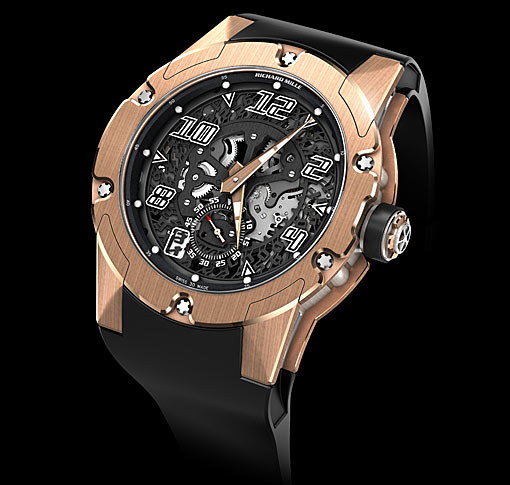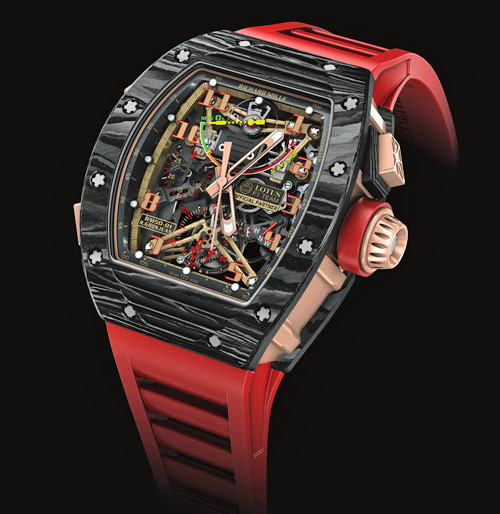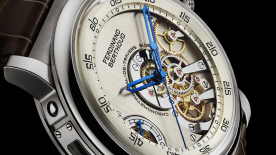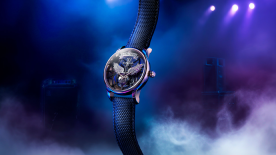WorldTempus: We couldn’t help but notice that you are wearing a smartwatch
Richard Mille: Yes, that’s my Samsung. I use it to count the number of steps I take every day and to see my e-mails. This morning I did 1.03km. It’s very practical. I don’t see any conflict between this and a traditional watch – one does not prevent the other. There is one drawback with the smartwatch, though, and that is that you have to touch it to see the time.
Could you envisage incorporating such technology in your timepieces?
I’m not against using electronics, but they would have to meet three criteria. Firstly, it would have to offer a function that cannot be implemented mechanically (such as a chronograph accurate to a millionth of a second). Secondly, the watch must be able to continue to function if the electronic device breaks down. And thirdly, we must be able to repair it over a period of 30-50 years.
"I am quite dictatorial in the way I work"
There is a great dialogue with customers and collectors here in Mexico. Is this also a source of ideas for you?
No, not really. I am quite dictatorial in the way I work. If I have an idea, I don’t like doing market research or asking people’s opinions. Because generally if I do everyone has their own opinions and you risk losing a lot of the substance of a watch. You end up with a product that is politically correct but which has lost a lot in the process.

So if someone buys a Richard Mille watch they can be sure that Richard Mille himself is behind it?
Of course, although not all the ideas come from me. Sometimes my developers have ideas but I’m the one who ultimately decides whether or not we proceed. In general, if there is a concept I like, we will look at the overall technical feasibility and decide whether or not we can do it, regardless of what it may cost or the time it may take. It creates a spirit of adventure because we know when we start but we have no idea when we are going to finish.
Does your penchant for using innovative materials add to the problems?
Yes, we have to do tests. I like new materials but above all they have to have some practical use. I don’t like gimmicks. Then these materials need to be anti-allergenic, resistant to erosion and wear, and we have to be sure that in 50 years’ time it will still be intact and that the watch can be repaired.
Where do you get your inspiration from for such new materials?
A lot of it comes from automotive applications, like in Formula 1, but I like any area that is technical, such as aeronautics, boats. What has always fascinated me in watchmaking is the fact that you are working in very small dimensions. A Richard Mille is really a receptacle for all these passions that I have, combined with the supreme difficulty of watchmaking, which are these small dimensions. This is what is interesting for me, because there are some materials from aeronautics that cannot be used in space and cannot be used in watchmaking. I also experimented with some materials used in space but they were actually a health risk, so I couldn’t use them. They were fine for launching rockets into space, because once they are in space you don’t have a problem. But we have to do very detailed studies to make sure that they are anti-allergenic. Then there is also the question of whether you can machine them. Some materials are simply impossible to machine.

"The sapphire case is an absolute horror - it takes three months to make one!"
So are there any limits to what you can do in terms of materials?
None whatsoever. Our manufacture (in Les Breuleux) is actually geared towards producing very small quantities and switching from one material to another. It’s also a new adventure each time. For example, some types of carbon produce dust that pollutes the tools in the machine because it is so corrosive. We spend a lot of time preparing the tools, cleaning them and recalibrating the machines. The sapphire case is an absolute horror - it takes three months to make one!
You have strong associations with the motor racing world and recently became a partner of the E.Dams team in the new Formula E. Can we expect a related watch soon?
No, I have some ideas but it won’t be ready for a while yet. Our average development times are about three years and can be as long as seven years.





